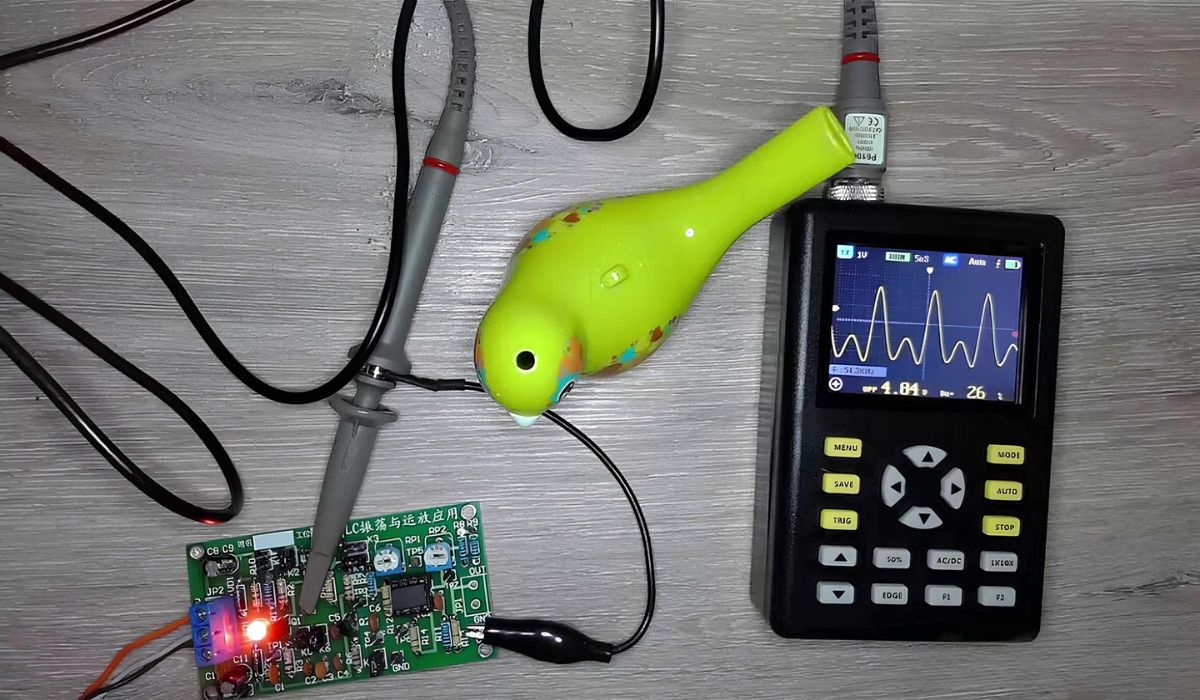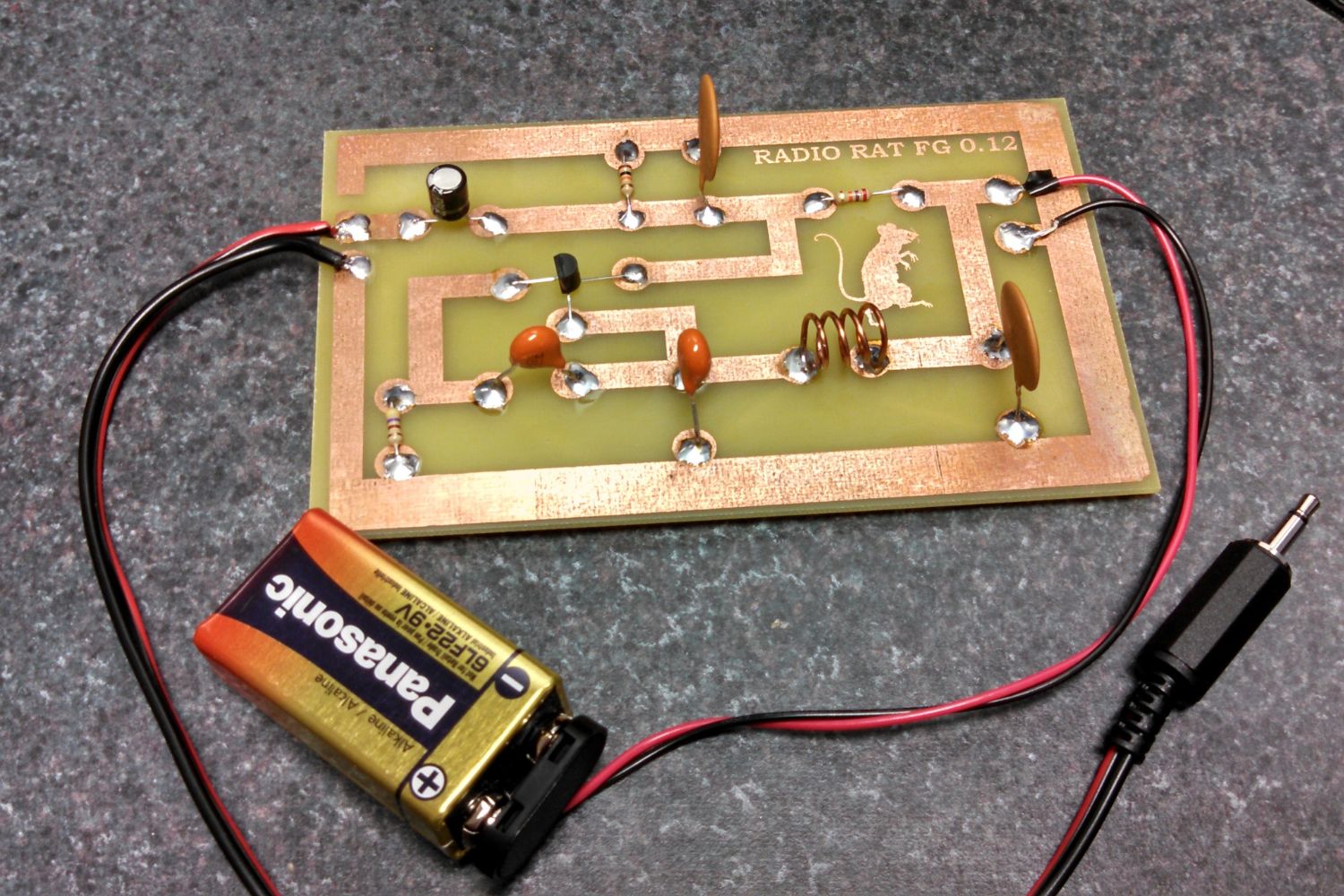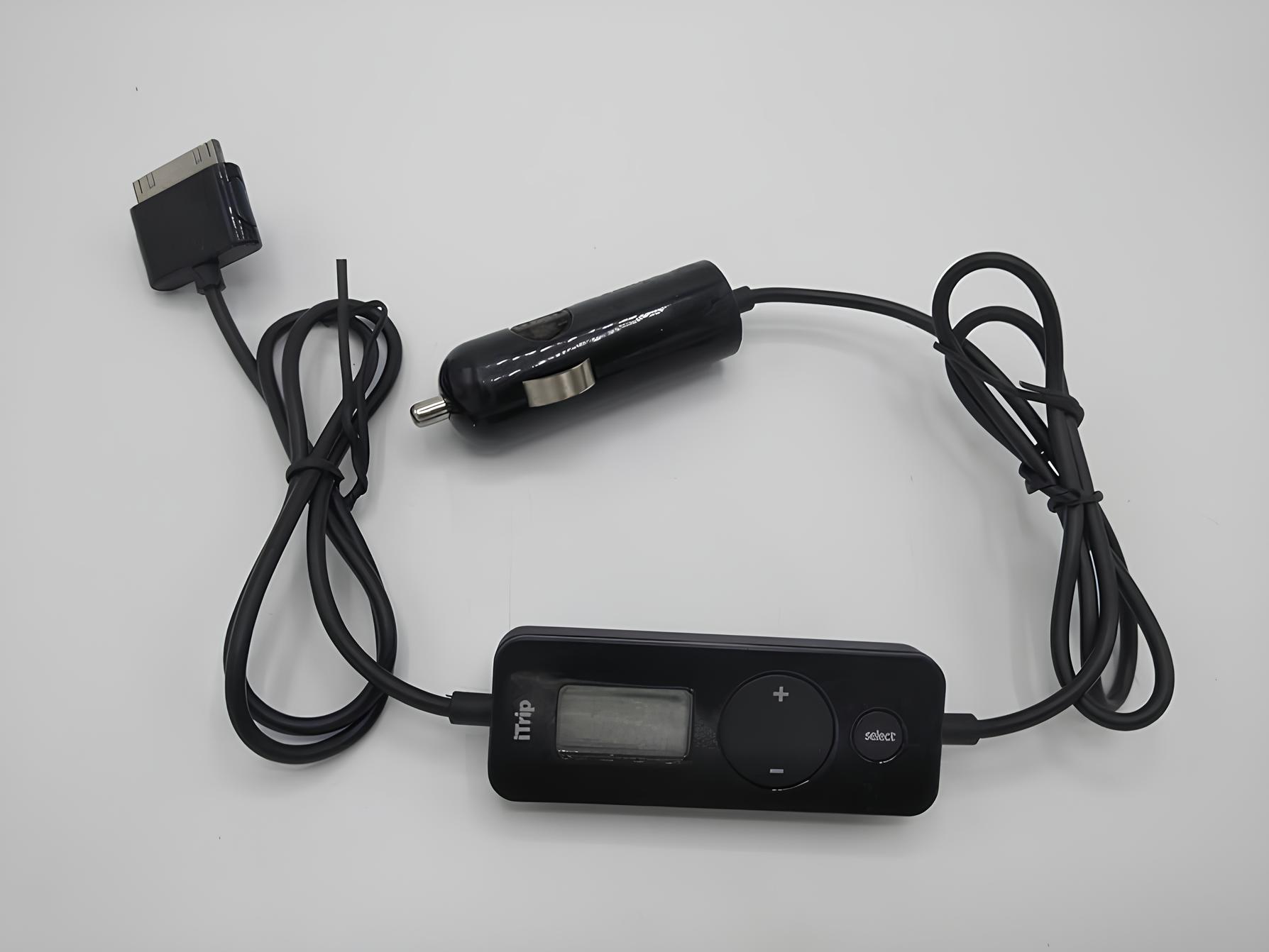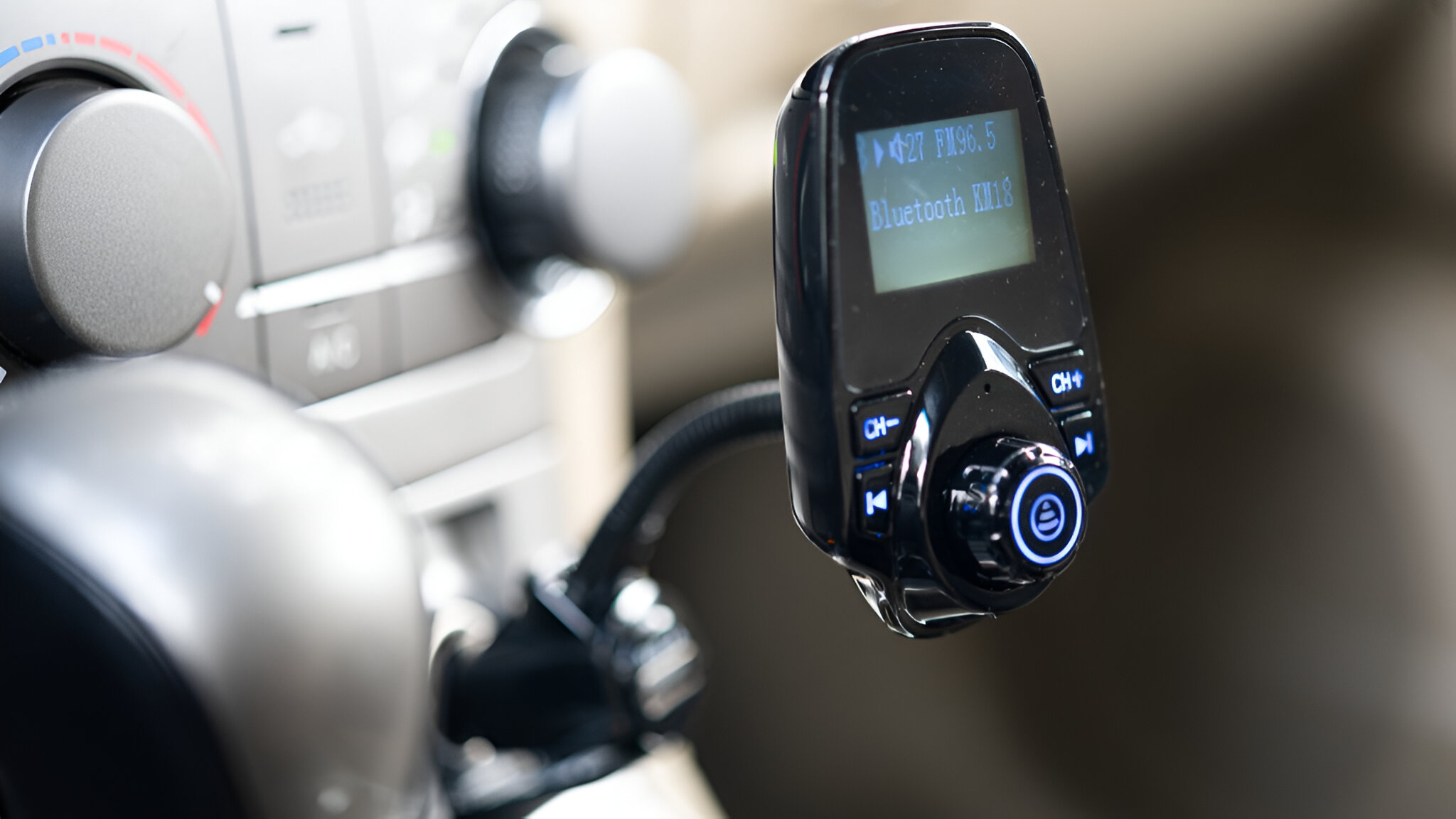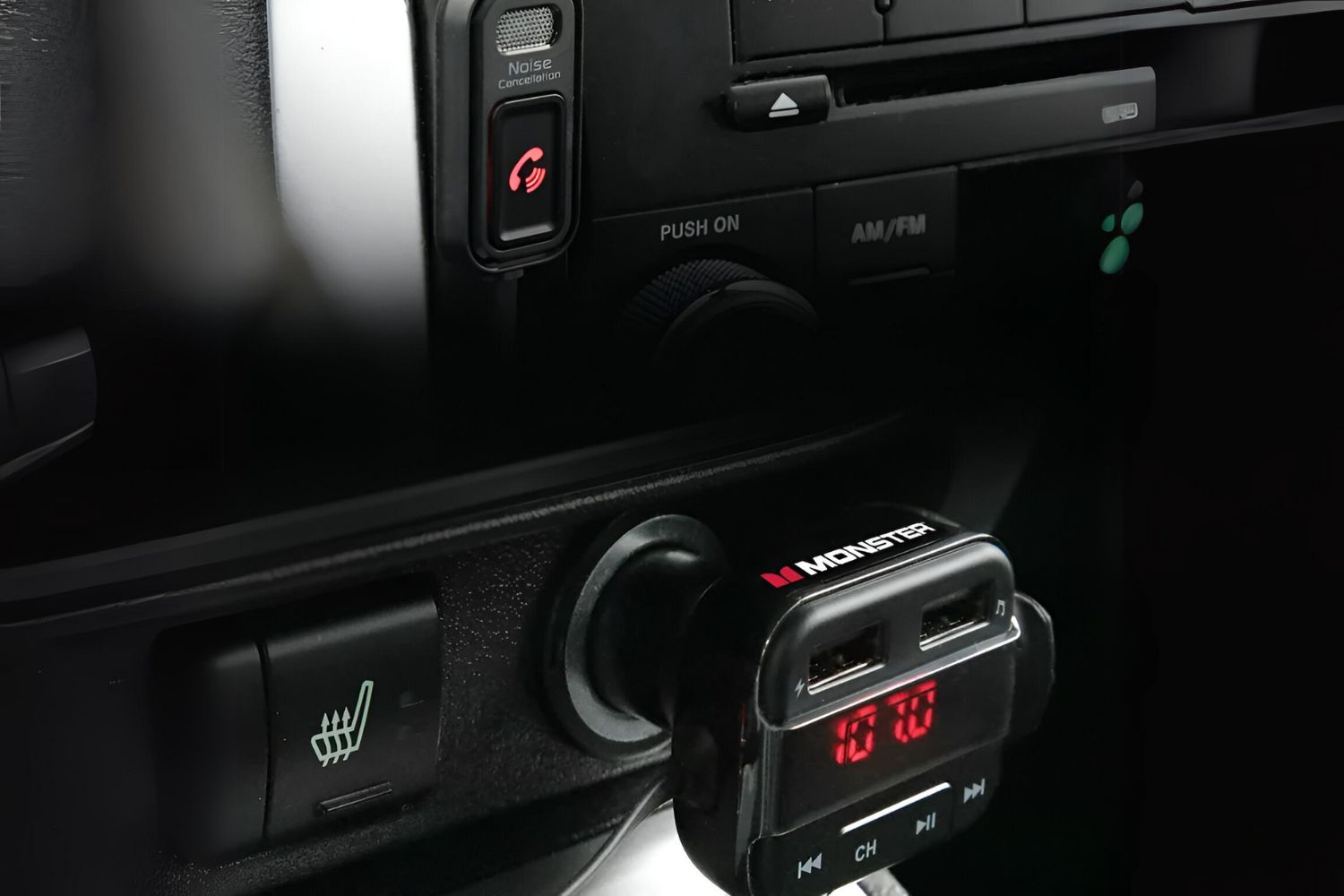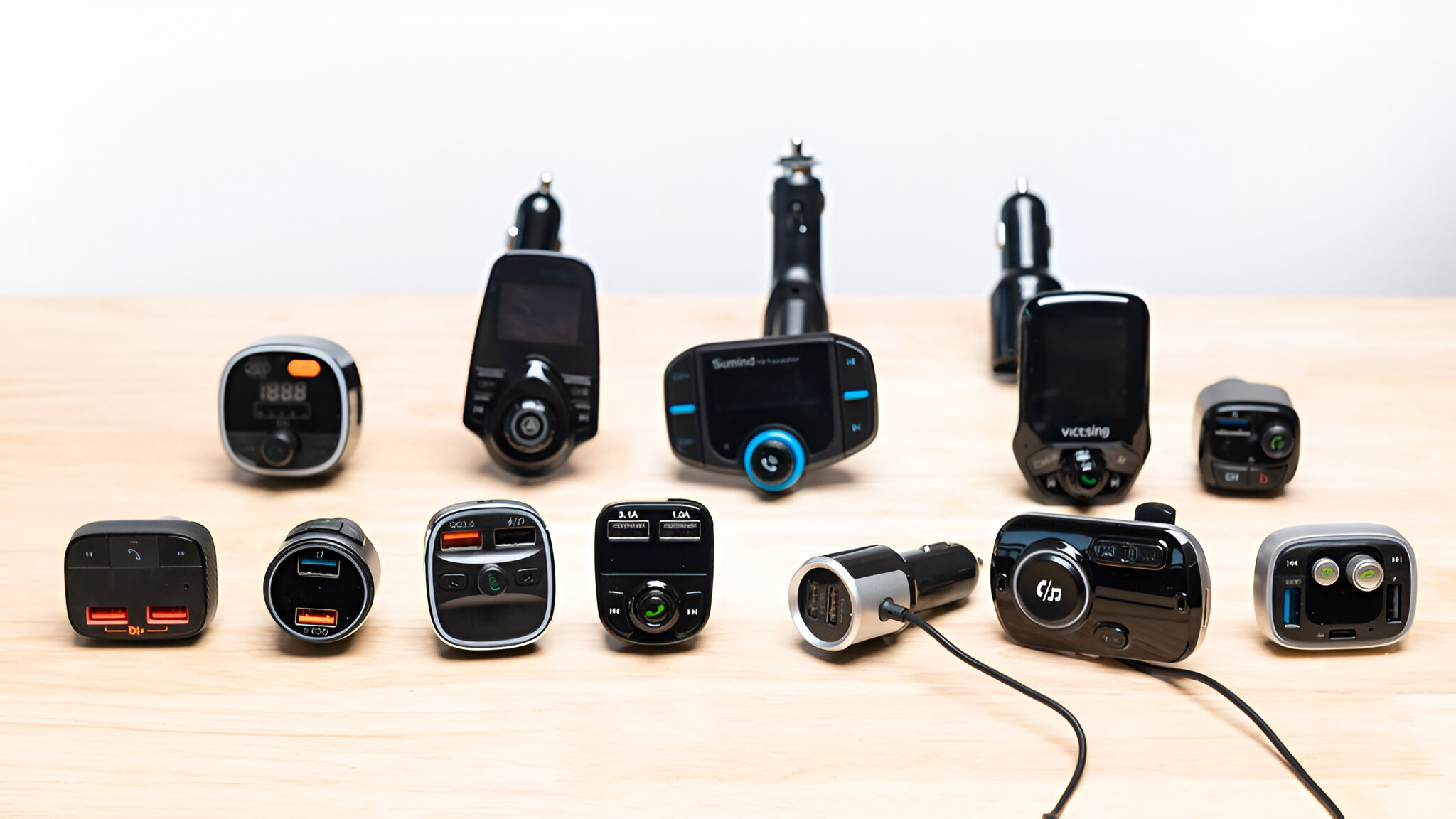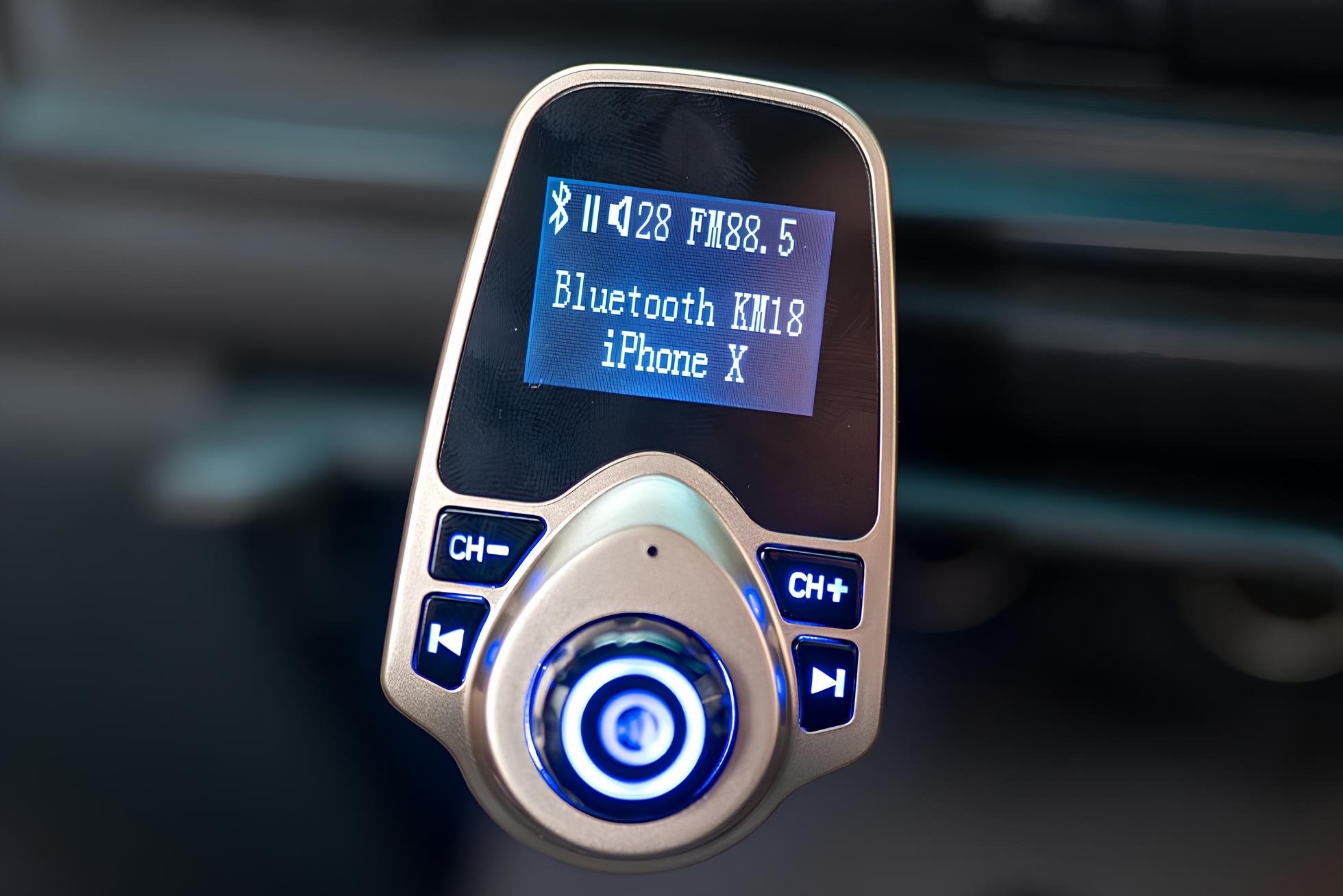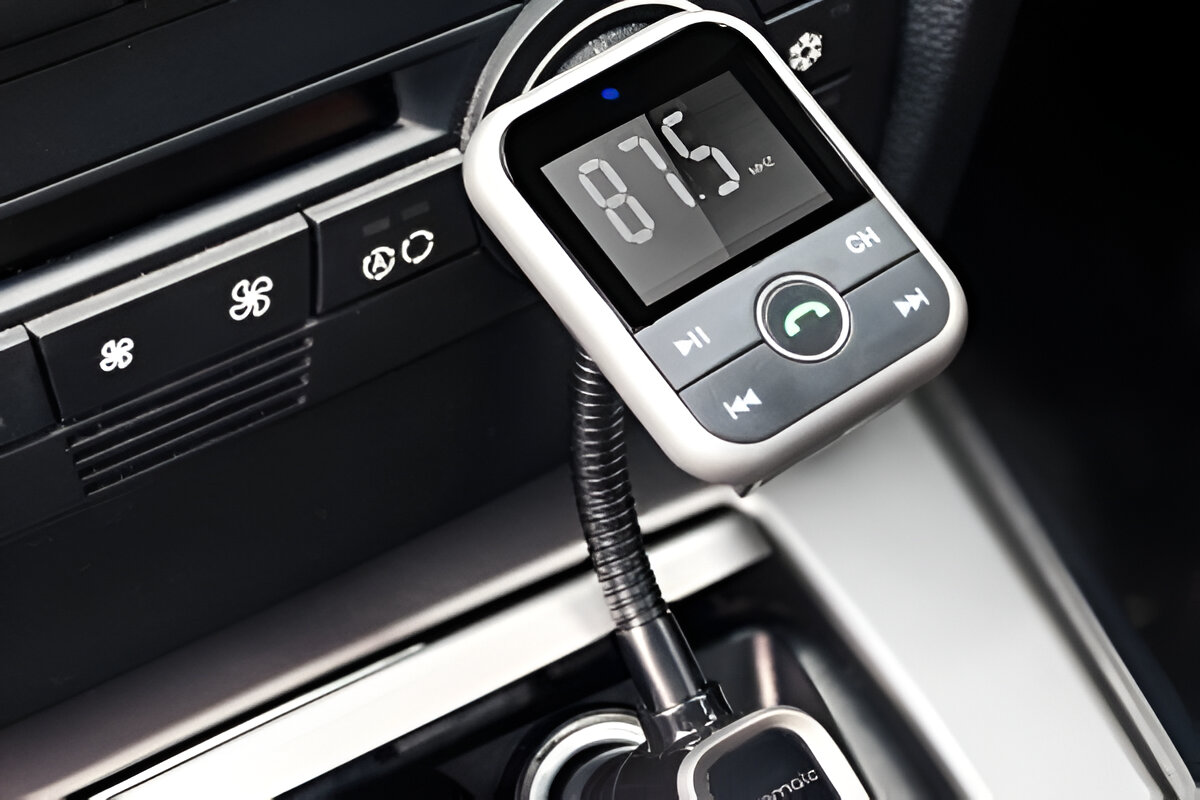Introduction
FM transmitters are an integral part of our daily lives, facilitating seamless communication and entertainment. These devices have revolutionized the way we transmit and receive audio signals, enabling us to tune in to our favorite radio stations, enjoy music on the go, and even connect our smartphones to our car stereos. Understanding the functionality and significance of FM transmitters is essential in comprehending their impact on modern technology and communication systems.
These compact yet powerful devices have transcended traditional radio broadcasting, finding applications in various fields such as wireless microphones, personal audio streaming, and even car audio systems. As we delve into the intricacies of FM transmitters, we will uncover the historical evolution, underlying principles, and future prospects of this innovative technology.
The journey to unravel the mysteries behind FM transmitters promises to be an enlightening exploration of the intricate mechanisms that enable us to tune in to our favorite frequencies and relish the auditory delights that accompany our daily routines. Let's embark on this captivating journey to uncover the magic behind the waves and discover the fascinating world of FM transmitter technology.
What is an FM Transmitter?
An FM transmitter is a device designed to transmit audio signals through frequency modulation (FM) to a designated receiving device, such as a radio or car stereo. It serves as a conduit for broadcasting sound from various sources, including MP3 players, smartphones, and other audio devices, to FM radios. This enables users to enjoy their favorite music, podcasts, or audio content through their preferred FM frequency.
The primary function of an FM transmitter is to convert the audio signal from an input device into an FM radio signal that can be received and played through a radio receiver. This process involves modulating the frequency of the radio signal to carry the audio information, allowing it to be transmitted wirelessly to nearby FM radios within a specific range.
FM transmitters come in various forms, ranging from standalone devices to integrated components within other electronic systems. They are commonly used in cars to enable wireless audio streaming from mobile devices to the car's audio system. Additionally, FM transmitters are utilized in public address systems, wireless microphones, and personal audio broadcasting, offering a versatile solution for transmitting audio signals over short distances.
These compact yet sophisticated devices have become indispensable companions for individuals seeking to amplify their audio experience and enjoy the convenience of wireless connectivity. As technology continues to advance, FM transmitters have evolved to incorporate enhanced features, improved signal clarity, and broader frequency coverage, catering to the diverse needs of users across different environments.
In essence, an FM transmitter serves as a conduit for wireless audio transmission, bridging the gap between audio output devices and FM radio receivers. Its ability to facilitate seamless connectivity and deliver high-quality audio signals has cemented its position as a fundamental component in modern communication and entertainment systems.
History of FM Transmitters
The history of FM transmitters traces back to the pioneering work of Edwin Howard Armstrong, a renowned electrical engineer and inventor credited with the development of frequency modulation (FM) technology. In the early 20th century, Armstrong embarked on a quest to revolutionize the field of radio communication by exploring alternative methods for transmitting audio signals. His relentless pursuit of innovation led to the invention of FM technology, which would ultimately shape the landscape of wireless audio transmission.
In 1933, Armstrong successfully demonstrated the superior performance of FM compared to amplitude modulation (AM), the prevailing radio transmission method at the time. FM offered enhanced signal clarity, reduced susceptibility to interference, and superior sound quality, marking a significant leap forward in radio broadcasting technology. This breakthrough laid the foundation for the widespread adoption of FM transmitters in the years to come.
The commercialization of FM transmitters gained momentum in the post-World War II era, as radio broadcasters recognized the potential of FM technology to deliver high-fidelity audio and expand the reach of radio programming. The introduction of FM radio stations heralded a new era of audio broadcasting, captivating audiences with pristine sound reproduction and a wider spectrum of available frequencies.
Throughout the latter half of the 20th century, advancements in semiconductor technology, signal processing, and frequency synthesis further propelled the evolution of FM transmitters. These developments led to the miniaturization of FM transmitter components, enabling the integration of FM transmission capabilities into portable devices such as personal audio players and mobile phones.
The advent of digital signal processing and the convergence of wireless communication technologies ushered in a new era of FM transmitter innovation. This convergence facilitated the seamless integration of FM transmitters into a myriad of consumer electronics, empowering users to wirelessly stream audio content to FM receivers with unprecedented convenience and flexibility.
As we reflect on the historical trajectory of FM transmitters, it becomes evident that these devices have continually evolved to meet the ever-changing demands of modern audio communication. From their humble origins in the pioneering experiments of Edwin Armstrong to their ubiquitous presence in contemporary consumer electronics, FM transmitters have left an indelible mark on the evolution of wireless audio transmission, shaping the way we experience and interact with audio content in our daily lives.
How FM Transmitters Work
FM transmitters operate on the principle of frequency modulation, a method of encoding information onto a carrier wave by varying its frequency. At the core of an FM transmitter lies a crucial component known as a voltage-controlled oscillator (VCO), which generates the carrier signal at the desired frequency. The audio signal, obtained from the input source, modulates the frequency of this carrier wave, resulting in the transmission of the audio information through the varying frequency of the signal.
The process begins with the audio signal being fed into a modulator circuit within the FM transmitter. This modulator is responsible for translating the audio signal into frequency variations that will be imposed on the carrier wave. As the amplitude of the audio signal changes, the frequency of the carrier wave is adjusted accordingly. This modulation of the carrier wave's frequency is what enables the audio information to be embedded within the transmitted signal.
Once the carrier wave has been modulated with the audio signal, the resulting FM signal is amplified to achieve the necessary power levels for transmission. This amplified signal is then fed into the transmitting antenna, which radiates the modulated FM signal into the surrounding space. The transmitted signal can be received by FM radio receivers tuned to the same frequency, allowing the audio information to be extracted and reproduced for the listener.
Key to the functionality of FM transmitters is the ability to maintain signal integrity and fidelity during transmission. Unlike amplitude modulation (AM), which relies on varying the amplitude of the carrier wave to encode information, FM's reliance on frequency variations results in a more robust and interference-resistant transmission. This characteristic makes FM transmitters well-suited for delivering high-quality audio signals with minimal susceptibility to noise and distortion.
In essence, FM transmitters work by leveraging the principles of frequency modulation to encode audio information onto a carrier wave, enabling the wireless transmission of audio signals to FM radio receivers. This process of modulating the carrier wave with the audio signal and transmitting the modulated signal via an antenna forms the fundamental operational framework of FM transmitters, facilitating the seamless delivery of audio content to listeners across diverse environments.
Applications of FM Transmitters
FM transmitters find diverse applications across various domains, harnessing their wireless audio transmission capabilities to cater to a wide range of needs. These versatile devices have permeated numerous facets of modern life, offering seamless connectivity and audio dissemination in a multitude of scenarios. Here are some prominent applications of FM transmitters:
-
Car Audio Systems: FM transmitters are widely utilized to enable wireless audio streaming in vehicles equipped with FM radio receivers. By connecting to the car's audio system, FM transmitters allow users to play music from their smartphones or MP3 players through the car speakers, enhancing the in-car entertainment experience.
-
Wireless Microphones: FM transmitters serve as the core component in wireless microphone systems, facilitating the transmission of audio signals from microphones to receivers without the constraints of physical cables. This application is particularly prevalent in live performances, public speaking engagements, and broadcast productions, where mobility and flexibility are paramount.
-
Personal Audio Broadcasting: FM transmitters empower individuals to create their own localized radio broadcasts, enabling them to transmit audio content to nearby FM radio receivers. This application is popular among hobbyists, event organizers, and community radio enthusiasts, allowing them to share music, announcements, and live commentary within a limited geographic area.
-
Public Address Systems: FM transmitters are integrated into public address systems to deliver audio announcements, music, and event commentary in large venues such as stadiums, auditoriums, and outdoor arenas. The wireless transmission capabilities of FM transmitters offer a convenient and scalable solution for disseminating audio content to diverse audiences.
-
Personal Audio Streaming: FM transmitters enable users to wirelessly transmit audio from portable devices, such as smartphones and tablets, to FM radio receivers. This application is particularly useful for individuals seeking to enjoy their personal music collections or streaming services through FM-equipped audio systems in homes, offices, or outdoor settings.
-
Emergency Broadcasts: FM transmitters play a crucial role in emergency communication systems, allowing authorities to broadcast critical information, alerts, and instructions to the public during emergencies and natural disasters. The widespread availability of FM radio receivers makes this application an effective means of reaching a broad audience in times of crisis.
-
Wireless Audio Connectivity: FM transmitters provide a versatile solution for establishing wireless audio connections between various devices, including televisions, gaming consoles, and audio players. This application enhances the flexibility and convenience of audio playback across different environments and setups.
The multifaceted applications of FM transmitters underscore their adaptability and utility in diverse settings, empowering users to harness the power of wireless audio transmission for entertainment, communication, and public address purposes. As technology continues to evolve, the potential for innovative applications of FM transmitters is poised to expand, further enriching the audio experiences of individuals and communities alike.
Advantages and Disadvantages of FM Transmitters
FM transmitters offer a host of advantages that contribute to their widespread adoption and utility in various applications. These advantages include:
Advantages
-
Wireless Connectivity: FM transmitters enable wireless audio transmission, allowing users to stream music, podcasts, and other audio content from their personal devices to FM radio receivers without the constraints of physical connections. This wireless connectivity enhances mobility and convenience, making it ideal for in-car entertainment, public address systems, and personal audio streaming.
-
High Fidelity Audio: FM transmission delivers high-quality audio with minimal interference and distortion, ensuring a superior listening experience. The frequency modulation method employed by FM transmitters results in robust signal clarity, making them well-suited for broadcasting music, speeches, and announcements with exceptional fidelity.
-
Wide Compatibility: FM transmitters are compatible with a broad range of audio playback devices, including smartphones, MP3 players, and other portable electronics. This compatibility ensures seamless integration with diverse audio sources, allowing users to leverage FM transmission capabilities across different platforms and devices.
-
Simple Setup: FM transmitters are relatively easy to set up and operate, requiring minimal technical expertise for installation. This simplicity makes them accessible to a wide audience, enabling individuals to harness wireless audio transmission without intricate configurations or complex wiring.
-
Versatility: The versatility of FM transmitters extends to their applications in diverse environments, ranging from automotive audio systems to public address setups. This adaptability underscores the flexibility of FM transmitters in catering to varied audio transmission needs across different contexts.
Despite their numerous advantages, FM transmitters also exhibit certain limitations that merit consideration:
Disadvantages
-
Limited Range: FM transmitters are constrained by a limited transmission range, typically spanning a few hundred feet to a few miles, depending on the transmitter's power and environmental factors. This restricted coverage may pose challenges in scenarios requiring expansive audio dissemination over long distances.
-
Interference Susceptibility: While FM transmission offers superior resistance to noise compared to amplitude modulation (AM), FM signals are still susceptible to interference from external sources, such as electromagnetic disturbances and competing signals. This interference can impact signal clarity and reception quality in congested radio frequency environments.
-
Regulatory Constraints: FM transmitters are subject to regulatory restrictions governing permissible transmission frequencies and power levels. Adhering to these regulations is essential to avoid legal implications and ensure compliance with established broadcasting standards.
-
Dependency on FM Receivers: The effectiveness of FM transmitters hinges on the availability and compatibility of FM radio receivers at the receiving end. In scenarios where FM receivers are not readily accessible or compatible, the utility of FM transmitters may be limited.
-
Signal Degradation: In certain environments characterized by obstacles, electromagnetic interference, or signal obstructions, the quality of FM transmission may degrade, leading to compromised audio reception and diminished signal reliability.
Understanding the advantages and disadvantages of FM transmitters is pivotal in evaluating their suitability for specific applications and environments. By weighing these factors, users can make informed decisions regarding the implementation of FM transmission technology to meet their audio communication and broadcasting needs.
Future Developments in FM Transmitter Technology
The future of FM transmitter technology holds promising prospects for innovation and advancement, driven by the convergence of emerging technologies and evolving consumer demands. As the landscape of audio communication continues to evolve, several key areas are poised to shape the trajectory of FM transmitter development in the coming years.
Enhanced Signal Processing and Digital Integration
Future developments in FM transmitter technology are expected to leverage advanced signal processing techniques and digital integration to enhance signal quality, optimize transmission efficiency, and mitigate interference. The integration of digital signal processing (DSP) capabilities into FM transmitters will enable adaptive modulation schemes, dynamic frequency management, and real-time signal optimization, resulting in improved spectral efficiency and robustness against external disturbances.
Expansion of Frequency Spectrum and Bandwidth Utilization
The exploration of extended frequency spectrum allocations and innovative bandwidth utilization strategies is anticipated to broaden the horizons of FM transmitter technology. Efforts to harness underutilized frequency bands and explore spectrum sharing paradigms will enable the expansion of available FM transmission channels, accommodating a greater diversity of audio content and fostering increased flexibility in wireless audio communication.
Integration with Emerging Connectivity Standards
The integration of FM transmitters with emerging connectivity standards, such as Bluetooth Low Energy (BLE) and advanced wireless protocols, will facilitate seamless interoperability with a wide array of audio playback devices and smart ecosystems. This integration will empower users to effortlessly stream audio content from their interconnected devices to FM receivers, transcending traditional limitations and embracing a new era of interconnected audio experiences.
Energy-Efficient and Sustainable Design
Future developments in FM transmitter technology will prioritize energy-efficient and sustainable design principles, aligning with global initiatives for environmental conservation and energy optimization. The integration of low-power transmission architectures, energy harvesting mechanisms, and eco-friendly materials will underscore the commitment to reducing energy consumption and minimizing the ecological footprint of FM transmitter deployments.
Augmented User Experience and Interaction
The evolution of FM transmitter technology will focus on augmenting the user experience and interaction paradigms, leveraging intuitive control interfaces, voice-activated commands, and personalized audio content recommendations. This emphasis on user-centric design and interactive functionality will elevate the engagement and accessibility of FM transmission systems, catering to the evolving preferences and expectations of modern audio enthusiasts.
In essence, the future developments in FM transmitter technology are poised to usher in a new era of innovation, redefining the capabilities, connectivity, and sustainability of wireless audio transmission. As technological advancements continue to unfold, the evolution of FM transmitters will undoubtedly shape the audio communication landscape, offering enhanced experiences and seamless connectivity for diverse applications and user scenarios.
Conclusion
In conclusion, the exploration of FM transmitters has unveiled the intricate mechanisms and diverse applications of this fundamental technology. From its historical roots in the pioneering work of Edwin Howard Armstrong to its pervasive presence in modern audio communication systems, FM transmitters have continuously evolved to meet the evolving demands of wireless audio transmission.
The functionality of FM transmitters, rooted in the principles of frequency modulation, enables the seamless wireless transmission of audio signals to FM radio receivers, fostering a rich tapestry of applications across various domains. Whether facilitating wireless audio streaming in vehicles, empowering wireless microphone systems, or enabling personal audio broadcasting, FM transmitters have established themselves as versatile conduits for audio dissemination.
The advantages of FM transmitters, including wireless connectivity, high-fidelity audio reproduction, and wide compatibility, have propelled their integration into diverse consumer electronics and professional audio systems. However, it is essential to acknowledge the limitations associated with FM transmitters, such as limited transmission range, susceptibility to interference, and regulatory constraints, which warrant careful consideration in their implementation.
Looking ahead, the future of FM transmitter technology holds promise for innovation in signal processing, bandwidth utilization, connectivity standards, sustainable design, and user interaction, paving the way for a new era of enhanced audio experiences and seamless connectivity.
As we reflect on the multifaceted capabilities and evolving landscape of FM transmitters, it becomes evident that these devices continue to play a pivotal role in shaping the way we experience and interact with audio content. The journey to unravel the magic behind the waves of FM transmission has illuminated the profound impact of this technology on modern communication, entertainment, and public address systems.
In essence, the exploration of FM transmitters has offered a captivating glimpse into the intricate fusion of engineering ingenuity, historical significance, and future innovation, underscoring the enduring relevance and transformative potential of this foundational technology in the realm of wireless audio transmission.







